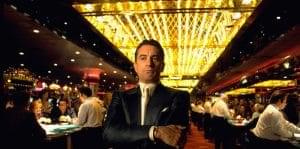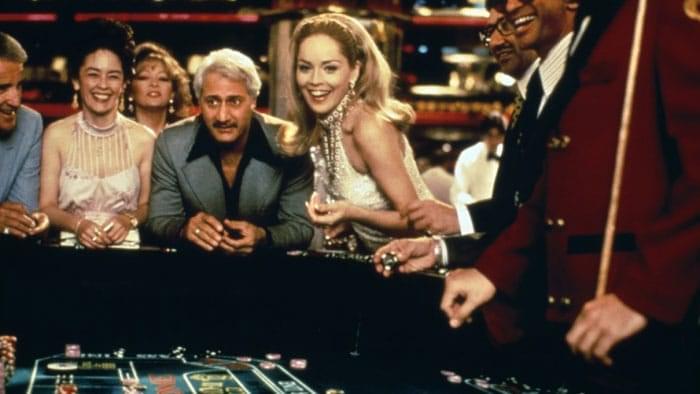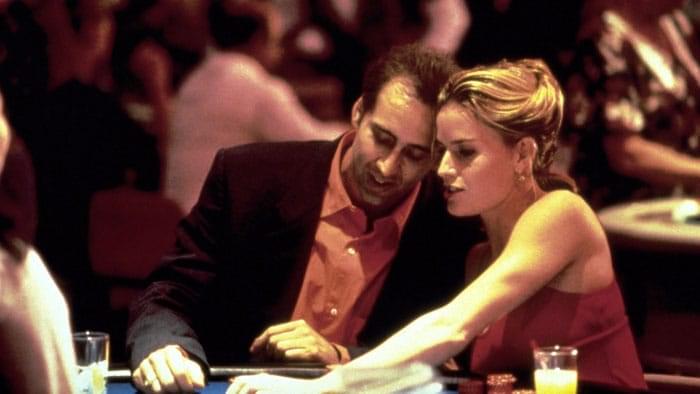
The subject of gambling has been quite popular in cinema for several decades. Considering the glamour of casinos’ interior design and the thrill of action taking place there, it’s not surprising that a casino movie will have a virtually guaranteed success with the audience, especially with the one that goes to the movies for entertainment. Besides, gambling and crime are closely related in most people’s minds, and crime action films have always been extremely popular among film lovers.
This article offers three examples of immensely successful casino movies that contradict the principles mentioned above. The first one has been successful mainly due to the director’s genius and the actors’ excellent performance in such a way that makes the setting irrelevant. The second example is neither glamorous nor criminal. And the last movie is not entertaining at all. Yet, all three have become blockbusters.
Casino

Released in 1995, Martin Scorsese’s Casino is probably the most successful casino movie of all time. Its beautiful decorations and costumes, excellent acting and gripping action have kept the film on all top lists for almost thirty years now. The film continues to receive from 80% to 100%, depending on the review.
Yet, Casino doesn’t want to grip you with the gambling action. On the contrary, the film constantly takes you away from the floor to the characters’ houses or the personnel area. The film is glamorous and gripping indeed, but that seems true about most of Martin Scorsese’s work. The gambling venue has nothing to do with it.
Given his excellent taste, impeccable sense of artistic beauty and genius for writing exciting stories, it could have been a film about fishing or volunteer work in Ethiopia. Whatever the setting and the events, everybody has to be wearing beautiful expensive clothes; the lights, colours, and music have to be superb; and the drama of life has to be intensified to the utmost degree.
Super Casino 2
Our second example comes from a completely different field, namely computer games. In other words, Super Casino 2 is not, actually, a movie at all. However, its developers have employed the most advanced and innovative three-dimensional effects to create such a close resemblance of the graphics and the sound to the real world that the final product becomes virtually indistinguishable from physical reality. Moreover, its plot and visual content reach such a high level of cinematographic complexity that many players think of it as a real movie.
At the beginning of the game, the main hero in Super Casino 2 comes to a gambling venue. For a start, he receives from the cashier of the casino free spins for the first stage of the game, which he can use to make enough cash for moving to the rooms of progressively higher order. The objective of the game is to win as much money as possible or even hit the jackpot.
The crystal clear sound and the gripping plot make you want to sit to the end even if you don’t particularly care about the gambling adventure itself. The visual effects are impressive, and the entire game is, in fact, 100% visual for most people since all the texts are in Japanese.
Produced by Nintendo, one of the wealthiest companies in Japan, Super Casino 2 is a sequel to their Caesar Palace, which has had tremendous success since its release. According to the players’ positive feedback, the main reasons for its popularity are excellent graphics, thrilling 3D effects, fantastic sound and a gripping story. Some of the most authoritative computer game magazines in the United States have given it 8 out of 10 stars.
Leaving Las Vegas

The last example differs from the standard casino movies in that it’s not about casinos or gambling at all, although its plot unfolds in the casino setting. In fact, it’s not even an entertainment movie, being a depressing psychological drama instead.
As a background to the film: there once lived a young man who did very little and achieved nothing; his wife left him, and he killed himself, apparently for that reason, at the age of 33. The following year, Mike Figgis, an English director, used the man’s suicide note as a script for Leaving Las Vegas.
The casino district’s bright lights, rich colours, and posh atmosphere greatly enhance the impressions made by Nicolas cage’s and Elisabeth Shue’s acting, but there’s virtually no gambling in the film. And despite the unannounced shift from the thrills and glamour of Las Vegas, which the name of the film had made the viewers expect, to the gloomier and more suicidal side of human nature, the film became a casino blockbuster nonetheless.
Final Word
What attracts people to casinos, even on the big screen, remains a subject for hot debates. Gambling venues in the background can even facilitate such far removed experiences as psychological drama and computer gaming. However, the examples in this article may suggest that it’s not necessarily the wealth, glamour or the crime action that we’ve learned to associate with the gambling setting.



Surely you should have mentioned that the young man whose ‘suicide note’ Leaving Las Vegas was based on was called John O’Brien, and the ‘suicide note’ was his novel? The way that part of the article is written is pretty hazy, although, yes, the novel was the author’s suicide note. And both the novel and the film are excellent.